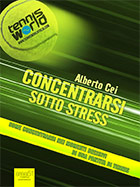Enhancing Children’s Cognition with Physical Activity
Phillip D. Tomporowski, Bryan A. McCullick, and Caterina Pesce
Human Kinetics, 2015, p.241
Enhancing Children’s Cognition with Physical Activity represents a very innovative book about the children development. Its real value consists to describe and explain specifically the strict integration between movement, cognitive processes and scholastic performances. It’s my opinion that every school teacher, youth coach and psychologist (not only sport psychologist) have to read it to understand fully the children growth processes. The authors explain that: “the central focus of the book is on methods of teaching physical activity games in ways that promote learning. Our teaching methods and games are firmly rooted in theory and research drawn from many disciplines: child development, neurobiology, psychology, and teacher education. As a result, you can be confident in offering these games to the children entrusted to you.”
The book is organized in a first part representing the theoretical section where all the aspects concerning the mental development and its relation with the movement and performances are described. Therefore in the same time the Authors coniugate research data and games to be played by the children. The second part is centered on translating research into practice to help teachers put into action the material presented in the first part of the book. The challenges involved in developing, implementing, and assessing the effectiveness of physical activity games are discussed. The third part provides games for preschool- and kindergarten-age children between 3 and 6 years of age and for elementary school–age children between 7 and 11 years of age.
In my opinion, the main topics theoretically presented regard the executive functions of the cognitive processess and the data concerning the relation between the participation to physical activity programs and the school performances. The executive functions concern “the capacity to think before acting, retain and manipulate information, reflect on the possible consequences of specific actions, and self-regulate behavior.” Anticipation, memory and self-regulation are too important and the Authors have been able to illustrate their relevance in a specific way, that I did not find so well explained in other books. Second, since this chapter the teachers will be aware of the relevance to teach not only the movement technical side ma also its cognitive components. Third form the data it seems clear that in the school with more PE minutes the children improve more their school performances.
Last but not least important characteristic of this book is the presentation and explanation of all the games proposed in the following sections and their age distinction.




